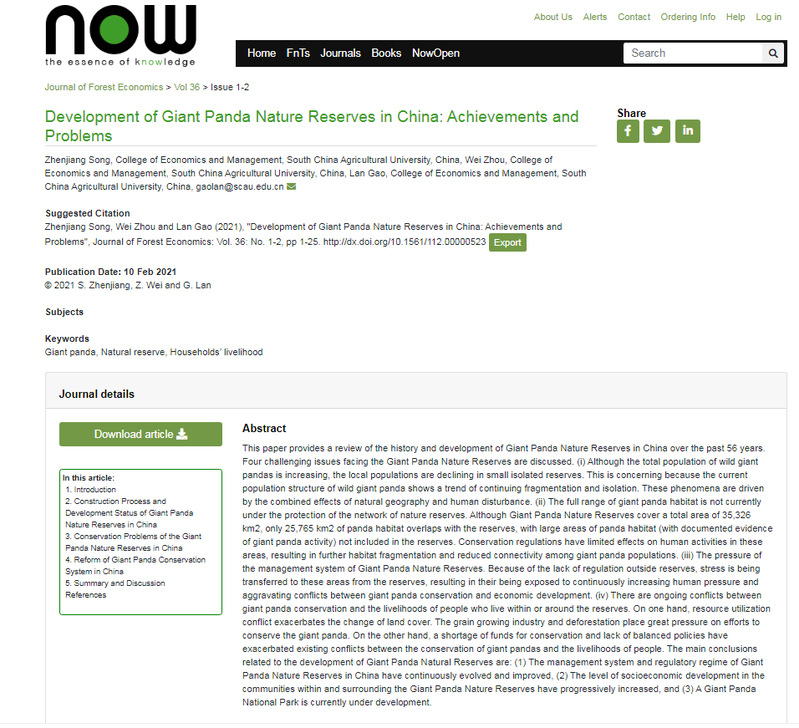出版时间: 2021 卷: 36 期: 1-2
DOI: 10.1561/112.00000523
论文地址: https://www.webofscience.com/wos/alldb/full-record/WOS:000619105800001
摘 要
This paper provides a review of the history and development of Giant Panda Nature Reserves in China over the past 56 years. Four challenging issues facing the Giant Panda Nature Reserves are discussed. (i) Although the total population of wild giant pandas is increasing, the local populations are declining in small isolated reserves. This is concerning because the current population structure of wild giant panda shows a trend of continuing fragmentation and isolation. These phenomena are driven by the combined effects of natural geography and human disturbance. (ii) The full range of giant panda habitat is not currently under the protection of the network of nature reserves. Although Giant Panda Nature Reserves cover a total area of 35,326 km(2), only 25,765 km(2) of panda habitat overlaps with the reserves, with large areas of panda habitat (with documented evidence of giant panda activity) not included in the reserves. Conservation regulations have limited effects on human activities in these areas, resulting in further habitat fragmentation and reduced connectivity among giant panda populations. (iii) The pressure of the management system of Giant Panda Nature Reserves. Because of the lack of regulation outside reserves, stress is being transferred to these areas from the reserves, resulting in their being exposed to continuously increasing human pressure and aggravating conflicts between giant panda conservation and economic development. (iv) There are ongoing conflicts between giant panda conservation and the livelihoods of people who live within or around the reserves. On one hand, resource utilization conflict exacerbates the change of land cover. The grain growing industry and deforestation place great pressure on efforts to conserve the giant panda. On the other hand, a shortage of funds for conservation and lack of balanced policies have exacerbated existing conflicts between the conservation of giant pandas and the livelihoods of people. The main conclusions related to the development of Giant Panda Natural Reserves are: (1) The management system and regulatory regime of Giant Panda Nature Reserves in China have continuously evolved and improved, (2) The level of socioeconomic development in the communities within and surrounding the Giant Panda Nature Reserves have progressively increased, and (3) A Giant Panda National Park is currently under development.
关键词
Giant panda; Natural reserve;Households' livelihood

基金资助:
the National Natural Science Foundation of China under Grant 71761147003 and Natural Science Foundation of Guangdong Province under Grant 2018A030310347.
责任编辑:董晓玲
审 定:黄 松